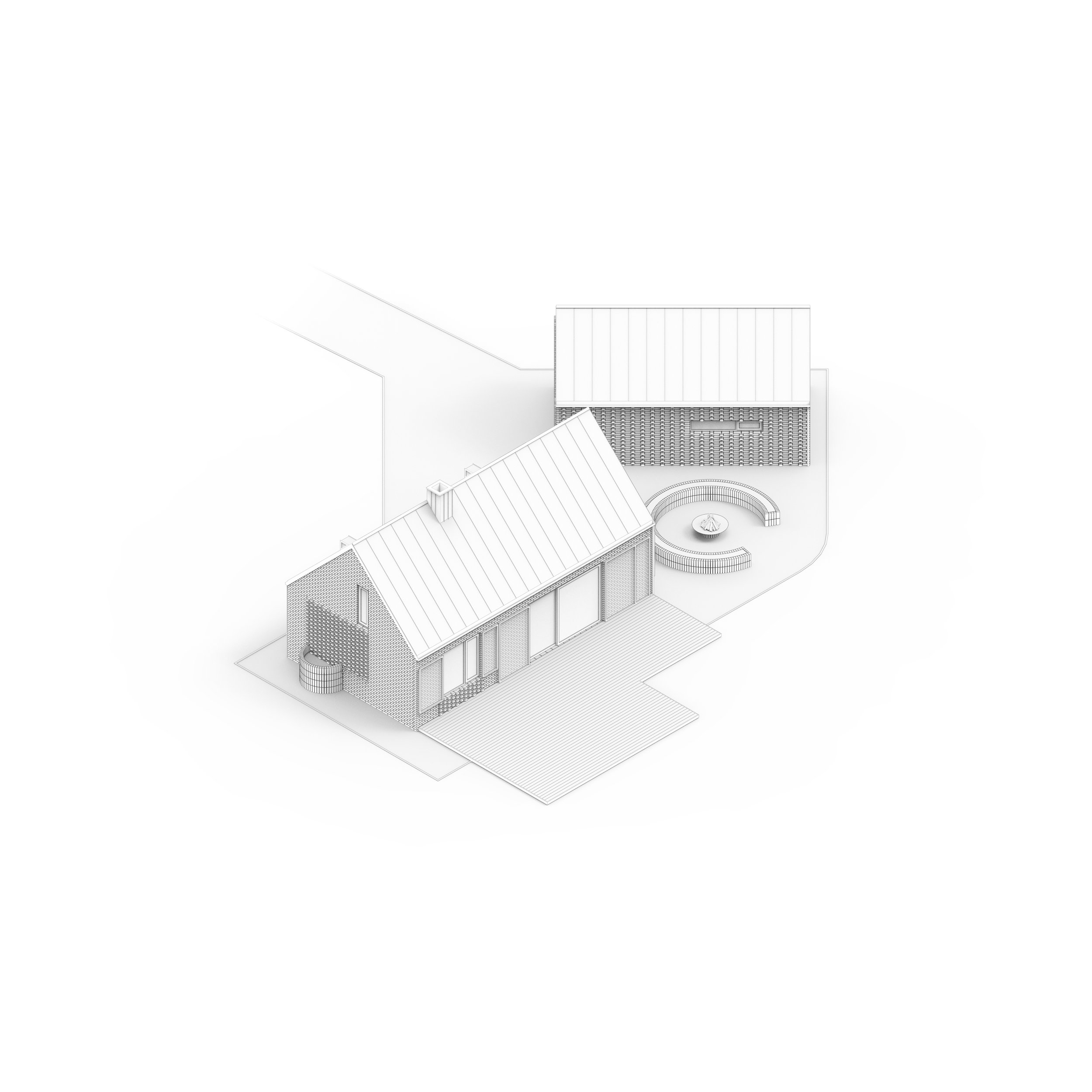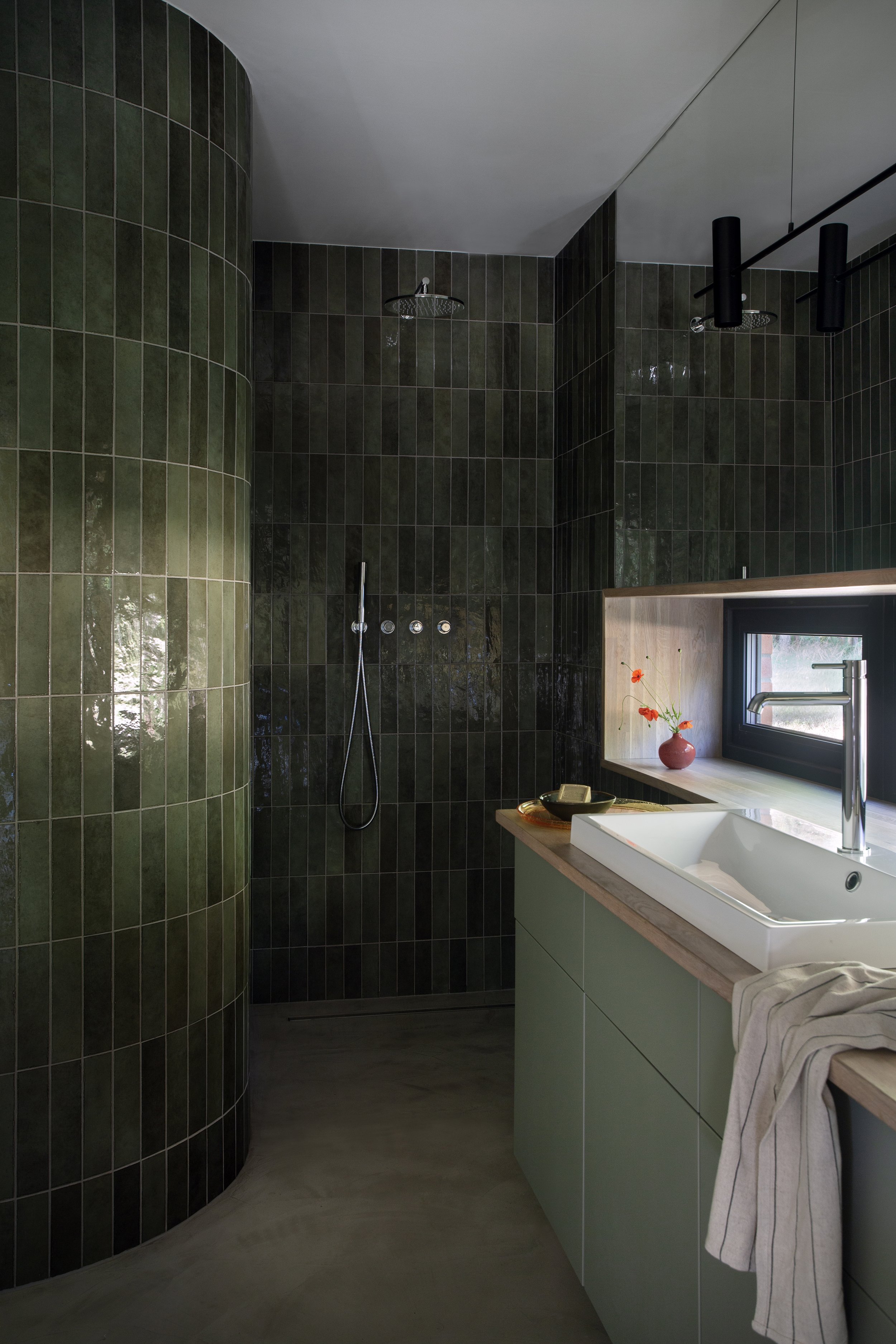DOM LAS (‘Forest House’ in Polish)
is a project born from a specific situation. 25 years ago, the client bought an empty field near his hometown, with the vision to create something for the future. Through care and attention, the 7 hectares has been tended to, trees planted, grasslands shaped. The careful process of silviculture with selective weeding and thinning of young pine and birch tree saplings has turned this disused field into an attractive and varied landscape, reflecting the native flora of the region.









Dom Las reflects this care the client has already invested in the land. The buildings are a result of a conversation between the vernacular style of Poland’s Kashubia region, the traditional materials of the area and the natural environment. Although the brief was minimal, the building needed to serve two different but complimentary functions: to enable the continued care of the land, but also offer occasional shelter for the client and his family. The result is two buildings which have a relationship to each other, but also to the landscape in which they are placed. This is emphasised through the materials used and details incorporated, the craftsmanship of local skilled workers and the celebration of family heirlooms.




The hearth is traditionally the centre of the home – the point around which all life rotates. We respected this tradition by placing the fireplace at the literal heart of the home building. The fireplace is framed by vistas from every room of the house emphasising this further, contrasting with the glimpses of the parkland beyond.


The primary materials were locally sourced. The pinewood used for the structure and furniture reflects those of the parkland, forming a continuity between the interior and exterior. Bricks were sourced from a local brickyard, their tone and materiality respecting the land and soil of the area. The green of the pines is reflected internally in the surface tones and glazed ceramic tiles found in the kitchen and the bathroom.












Kashubia is a region known for the skills of its craftspeople. These are celebrated and emphasised through detailing incorporated in the building. The metalwork shutters were created locally. The fine fretwork delicately filtering light into the interior space, providing protection from the elements. The patterning of the external façade was inspired by working with a local brickworker who understood the ornamentation, embroidery, music, entertainment, and wealth of textures and materiality of the region. The result is a modern expression and reinterpretation of traditional motifs.






These skills and artistry are also present in the furnishings of the Dom Las. Studio Onu designed the dining and coffee tables, drawing inspiration from the traditional turned-wood style furniture familiar to Kashubia to create a refined and modernised form. These also spoke to some precious examples of family craft the client had inherited from relatives. Studio Onu wanted to incorporate them within the building, celebrating them in their own right, and framing the connection between them and the landscape. The large tapestry of poppies encapsulates the nature of this house – the flowers reflect those which have started to germinate and grow wild among the grassland, connecting again the interior and exterior of this celebration of the land.


Designing in nature and from nature, in tradition and from tradition, in history and from history.
Designing in nature and from nature, in tradition and from tradition, in history and from history.
Photographer: Martyna Rudnicka
Interior Stylist: Anna Salak


